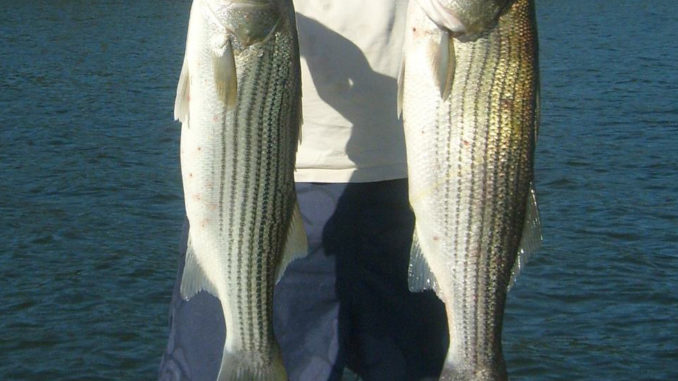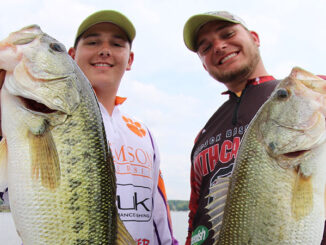
Guide of Joe Jobin of Xtreme Striper Fishing said fishermen can catch good numbers of stripers from North Carolina’s Lake Hickory, but just upstream, Lake Rhodhiss spits out bigger fish.
“At Rhodhiss, fishermen may catch only five to seven stripers a trip, but those fish will run 7 to 12 pounds rather than the numerous smaller fish that can be caught at Hickory,” said Jobin (704-240-0165). “A trophy striper weighing 20 pounds or more is a possibility.”
Jobin dismissed the myth that it’s easier to catch stripers at a small lake like Rhodhiss — 3,060 acres — than on sprawling impoundments more than 10 times its size.
“When a front moves into Rhodhiss, it shuts down the bite and spreads the fish throughout the lake,” he said. “At a larger lake, a front doesn’t have the same impact; somewhere on that larger lake, the fish will bite.”
Rhodhiss also has an abundance of forage, which translates into bigger fish but also tougher fishing.
“Rhodhiss is full of bait; stripers don’t need to run down bait to have a meal” Jobin said. “That’s why stripers rarely school and chase bait at Rhodhiss, except briefly in the mornings and evenings.”
A transition month like October adds to the challenge, so Jobin adjusts his tactics as the month progresses
In early October, with the water temperature ranging from the upper 60s into the 70s, Jobin fishes the area from Rhodhiss Dam to the NC 127 bridge with down lines. He uses six Ugly Stik rods holding Ambassadeur 6500 reels spooled with 15-pound monofilament. The main line is tied to a 4- to 5-foot leader of 17-pound fluorocarbon featuring a No. 6 treble hook with a prong running through the nostril of a 4- to 6-inch gizzard shad.
The six down lines carry sinkers weighing 2 ounces, 11/2 ounces or 1 ounce to probe depths to 45 feet. The lines are fished with the trolling motor set at .5 mph.
Once the water temperature dips into the lower 60s, Jobin sets aside the down lines in favor of two downriggers for deeper water and four planer boards for shallow water, all baited with live gizzard shad.
He pulls these rigs at 1 mph from Big Creek to the Castle Bridge area, targeting points 15 to 20 feet deep in the morning and 25 to 30 feet deep during the day. He covers one bank on one pass, the opposite bank on the return pass.
His efforts frequently produce stripers that can really stretch a line, much to his clients’ delight.




Be the first to comment